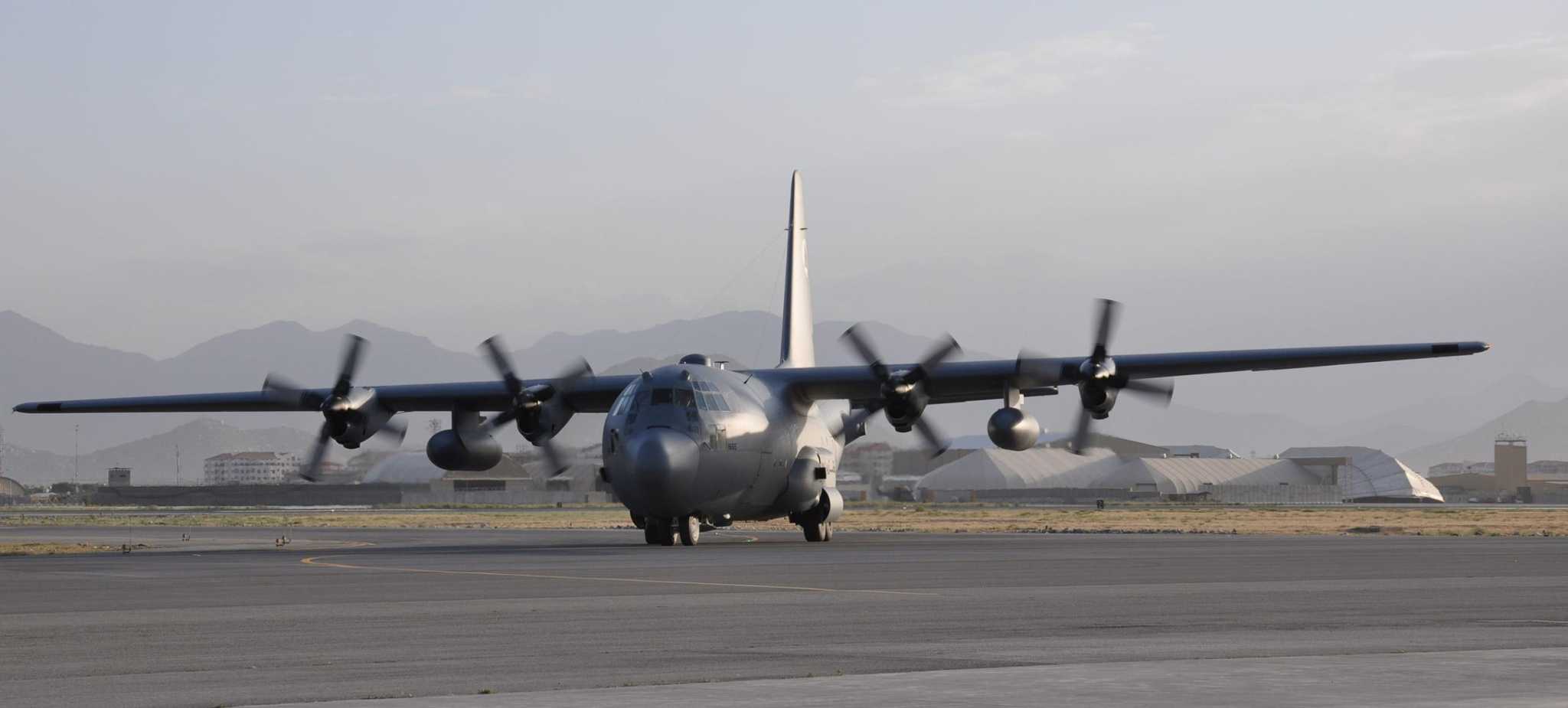KABUL, Afghanistan: A C-130 Hercules touched down at Hamid Karzai International Airport, Kabul, Afghanistan, June 20, bringing expanded flight capabilities to the Afghan Air Force.
After a weeklong journey beginning at Little Rock Air Force Base in Arkansas, the arrival of the C-130 in Afghanistan’s capital city illustrates a partnership that will provide increased tactical airlift and mobility operations throughout Afghanistan and beyond.
In 2010, coalition partners recognized that C-130s could provide the Afghan Air Force with increased airlift, resupply and casualty evacuation capabilities, and a plan to supply the Afghan Air Force with a fleet of their own was born. Two aircraft arrived in mid-2013, with a third the following summer. The arrival of the fourth and final C-130 from the United States signifies a program five years in the making, and well worth the wait, said Faulk.
“These C-130s are the Afghan Air Force’s first four engine aircraft with this type of expanded capability,” said Denver native Lt. Col. Tyler Faulk, deputy director of the Combined Security Transition Command-Afghanistan’s Security Assistance Office. “This fleet allows them to transport supplies or troops within Afghanistan, as well as to partner nations where they can execute missions, trainings and exercises; a whole host of international activities.”
Faulk explained that the C-130 is a medium-lift aircraft, capable of expediting troop and supply movement, and allows for international reach, making it “a huge force multiplier.”
“Afghanistan needs to perform more missions and having a fourth C-130 allows for that,” said Afghan Air Force Capt. Muhammad Azimy, a C-130 pilot who has been anxiously awaiting the arrival of the aircraft. “We need to support more troops, moving them as soon as possible from one point to another, getting them into the fight faster. Getting commandos from the north to the south by helicopter would take days, but by C-130 it will take only a few hours.”
“The new fleet is a complete departure from anything the Afghan Air Force has owned before,” said Faulk.
Before bringing the planes into a fully operational status, personnel were familiarized with the new equipment and technology. Aviators, mechanics and loadmasters trained in the United States in preparation for the arrival of the fleet, and the Afghan Air Force can now conduct regular maintenance and training in country.
As the Foreign Military Sales executor, the Security Assistance Office brought together the requirements needed from the Train, Advise, Assist Command – Air advisers, and connected them with available equipment in the U.S. inventory. After each plane’s arrival, they transitioned to supporting the sustainment of the aircraft.
“Our end goal is to get them to self-sufficiency, and train them well enough that they are able to take over the entire process from development of the capability, through procurement, sustainment and even life cycle management.”
Faulk has no doubts the Afghan Air Force will be able to step up to the challenge. He stressed the collaboration between Afghanistan and the Security Assistance Office played an important role in the successful procurement of the fleet.
“This was a massive effort taken on by the Afghans, but we’ve been around every step of the way to help ensure the mission’s success,” he said.
“It’s a very effective aircraft, and will accomplish a lot of missions for the Ministry of Defense, Ministry of Interior and even President Ghani,” said Azimy. “This fourth C-130 is very important to us.”










